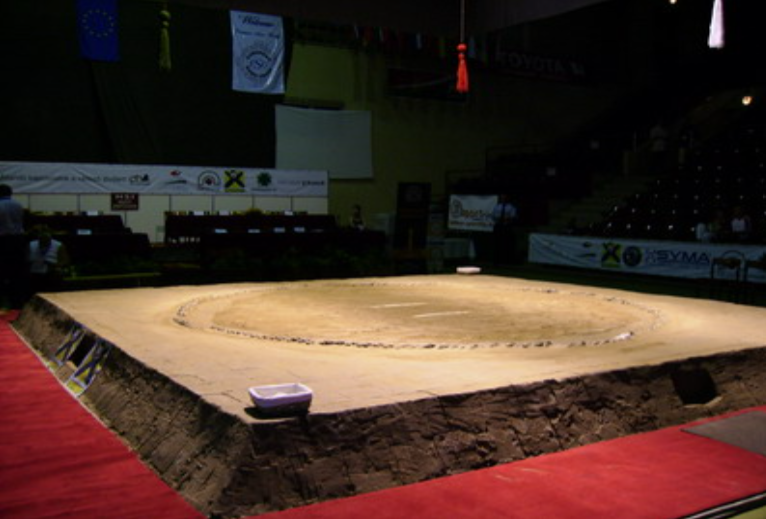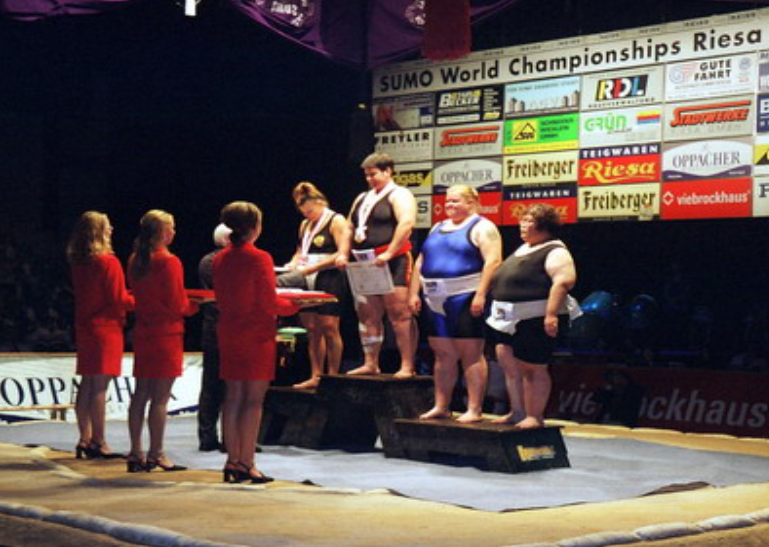Sumo
SUMO HISTORY
Sumo is the traditional way of fighting of japanese people. Origin of Sumo is very ancient: was born in India and passed in China as entertainment at the imperial court.
First historic news about Sumo are in ancient Chinese documents of the time of Chou dynasty. In japanese history we find Sumo for the first time in the Kojiki, the most ancient document of this argument (712 d.C.).
In Nihonshoki or Nihonji (Japanese History 720 d.C.) we find news about the famous match of Nomi No Suke versus Taima No Kehaya: they were the most important wrestlers of the age. Under the eyes of Emperor Suinin Nomi No Suke won! He gave to is way of fighting the name of “SUMO” and for this is considered the father of sumo. This is not the only legend that speak of sumo origin: in japanese Mythology many gods and heroes compete to have paternity of this art of fighting that arrive to our days with different names and meaning
in different historical ages.
At start was only an entertainement for country peoples, after, under influence of Shinto religion, became a real ceremony.
From that time was called “Shinji Zumo” (Sumo for God). Became also entertainment form for the emperor and his guests. This tradition is still alive: in professional sumo we have also now the “Emperor’s Cup”. Sumo was the firs form of martial art used by militars and samurai to make training for war: in ancient time the fight body-to-body was very important also in war.
The “Show variant” of Sumo that we can see now started about three centuries ago with the name of “Kanjin Zumo”, arriving to our days with the name oi Ozumo (big sumo) and at the start of this century (june 1909) was declared from japanese governement “National Sport of Japan”.
SUMOSPORT AND RULES
Sumo culture is very interesting also for occidental world and, to permit to all to make training and fight in this way, we have different rules that let sumo be SPORT.
Sumo Sport have international federation (International Sumo Federation and European Federation of Sumo).
It is a way of fighting “body to body”: two wrestlers, called “Sumotori”, fight in a circular area of 4.55 meters of diameter, called “dohyo”.

Who touch the ground with one part of the body that is not the sole (of foot) or go out from Dohyo will be the looser.
During the match is allowed the use of legs and arms to push, pull and throw the opponent.
Are not allowed strokes that can be bad for the health of sumotori: with head, on genitals, bites, nudges, strokes with closed hand or given from up to down.
Fight is directed by a central referee (Gyoji) with the help of 4 judges (one for cardinal point) and a timekeeper.

Time of the match is 3 minutes, but usually it finish in few seconds. Categories are good to give the same opportunity of victory to all fighters.
Weight categories for senior class are these:
Men
Up to 85 Kg
From 86 Kg to 115 Kg
Over 115 Kg
Open (without limits)
Women
Up to 65 Kg
From 66 Kg to 80 Kg
Over 80 Kg
Open (without limits)
To see a fight of open category is very spectacular and make you think to traditional sumo.
A sumo wrestler fight wearing only “mawashi”: a very long and resistant belt, that turn many times around his body and is a good point to catch the opponent.
For women is allowed the use of a leotard to wear under mawashi.

As in all other japanese martial arts the respect for the opponent is very important: in this meaning SUMO SPORT is same as professional sumo.
Sumo Sport is not only a way of fight: is good also as a practice for young and old peoples that want make training with a contact sport and want know more and more how mind and body can be used with harmony.
As in all other sports, doing training of sumo sport, you can express yourself knowing you strength and learn to be always fair.
